[Jimbaux wonders how he can be lost if he’s got nowhere to go.]
Ah, yes, Metallica’s Death Magnetic, which had just been released when these pictures were taken on Tuesday 25 November 2008, provides today’s song, an appropriate song indeed; I listened to that album plenty in late 2008, including the week that these pictures were made.
Was He The One Causing Pain, With His Careless Dreaming?
Maybe he was, or maybe he would be, but, at the moment, he was focused on the Louisiana & Delta Railroad’s Schriever job building its westbound train this morning at Schriever.
Most if not all of those cars were bound for MiSwaco in Boeuf.
And How Can I Blame You, When It’s Me I Can’t Forgive?
What, you’re not listening to the song? Anyway, with the train now having a warrant out of town westbound, it’s time to get to Horseshoe Road and set up for a shot. How’s this?
Let’s turn around and see it going away.
Yeah, okay.
The Chacahoula Broadside
Sometimes, I call it the “Dirtbag Broadside” due to a really unpleasant incident with some locals back in late 2003 in which I was threatened and cursed at while standing on the side of the highway, on public property. Some people really just need to be killed, I tell you.
Anyway, this shot was one of my stand-by shots back in the day before I settled on my more-well-known Chacahoula westbound shot just a few dozen feet to the east, which can be done at any time during daylight, unlike this shot, which can only be done around mid-day in late fall and early winter:
You can also see that – as a tight broadside – this shot only works well with trains that have only one or two locomotives, further limiting the shot opportunities to trains like this one. Even the Chip Local rolls through here too late for the view to be of any use.
Speaking Of The Chip Local
I took a break and went back to the farm; four hours later, the UP Local was rolling through Schriever on its way to Morgan City.
There seems to be a goat in the picture too. Oh, well.
In those days, I really didn’t photograph Chip himself. Oh, well.
Boeuf
What the heck? Let’s go to Boeuf, and that’s what I did, where I photographed the L&D job emerging from the North Boeuf trackage after switching.
Now that Carl has opened the switch and the derail, the train can emerge from the spur toward the mainline.
Well, I’m not sure that that was the best use of my time.
A Brush With History As We Are Back in Schriever
Below, we see the Schriever Job doing a little bit of switching as it puts its train away, but most ‘significant’ for me in the picture is what is passing overhead.
Sugar cane products once had a large presence on the rails here, as my beloved Napoleonville Branch started in the background of this picture where you can see, just to the right of the locomotive, the stored plastics hopper cars on the 1,000′ or so that is left of the branch, and this yard was once full daily of covered hopper cars loaded with refined sugar. Earlier, the Southdown Sugar Refinery in Houma – the branch to which started in the right foreground of the picture where that stub track remains – produced sugar and shipped by rail too.
Except for the MofW open-top hopper, all of the cars in the above picture are for products in the oil and gas industry, and the only railroad customer dealing with sugar cane remaining in these parts is Raceland Raw Sugars, which ships molasses by tank cars, which are usually interchanged with UP in Raceland.
Forgive Me
Seventeen minutes later, BNSF’s M-LALNWO passed.
The M-LALNWO carried to New Orleans all of the non-CSX interchange traffic.
That’s all for this episode, for this day.
Forgive!
Jimbaux
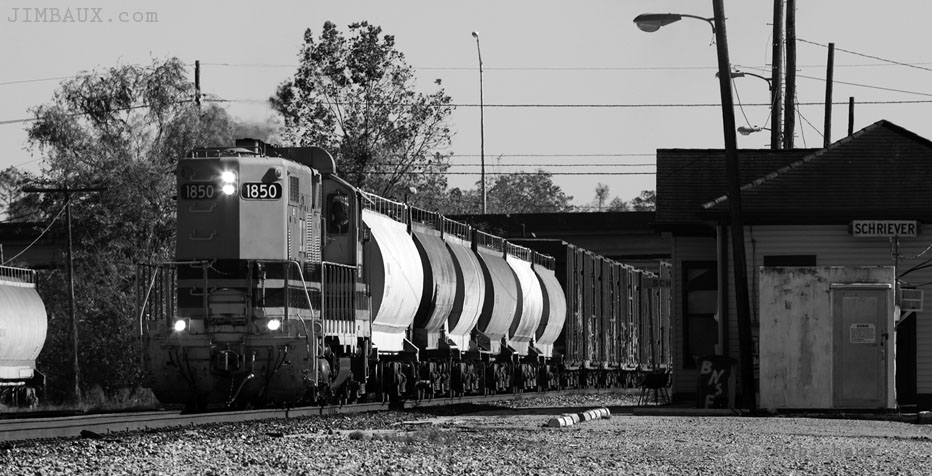
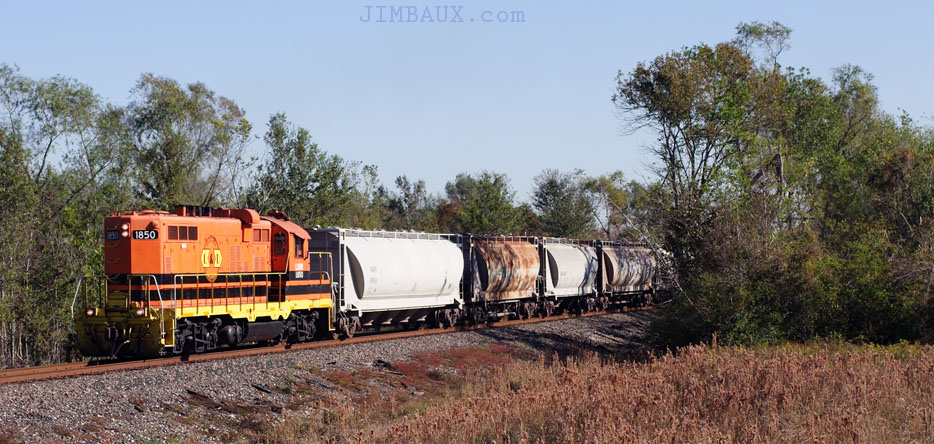
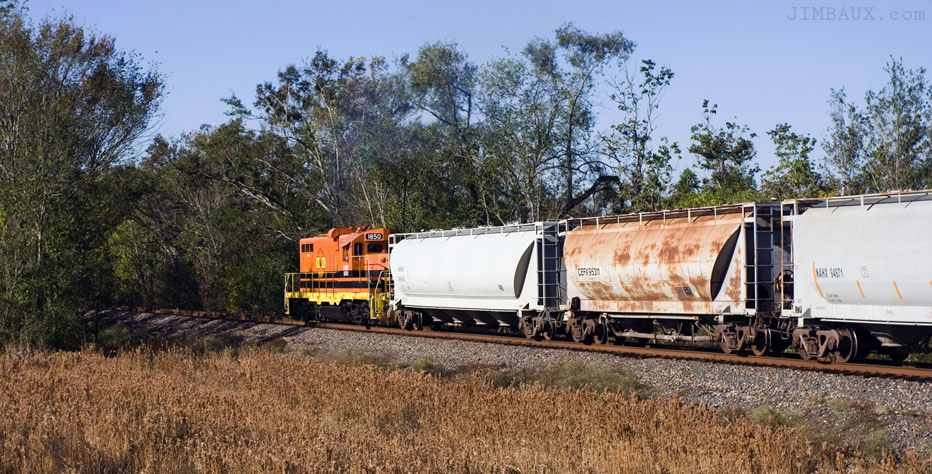
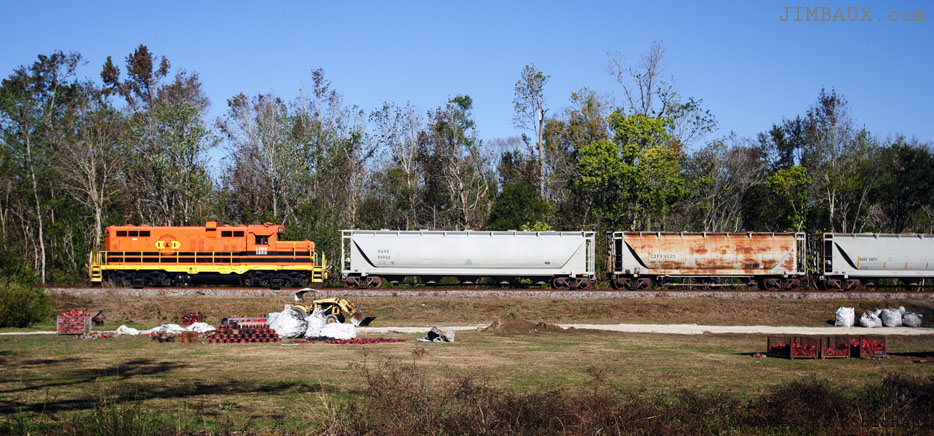
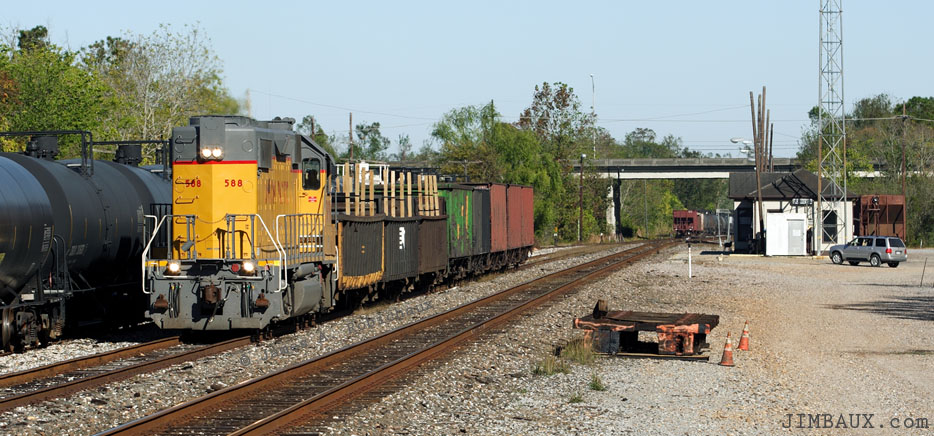
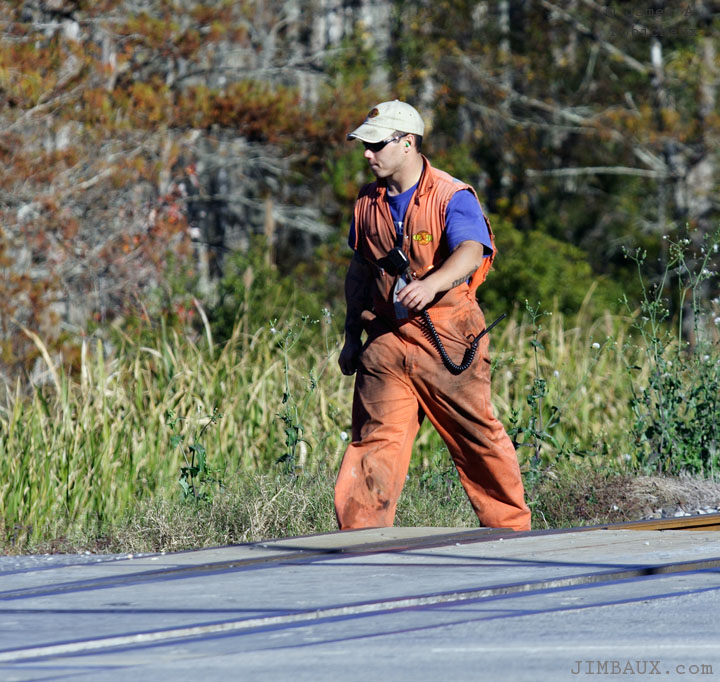

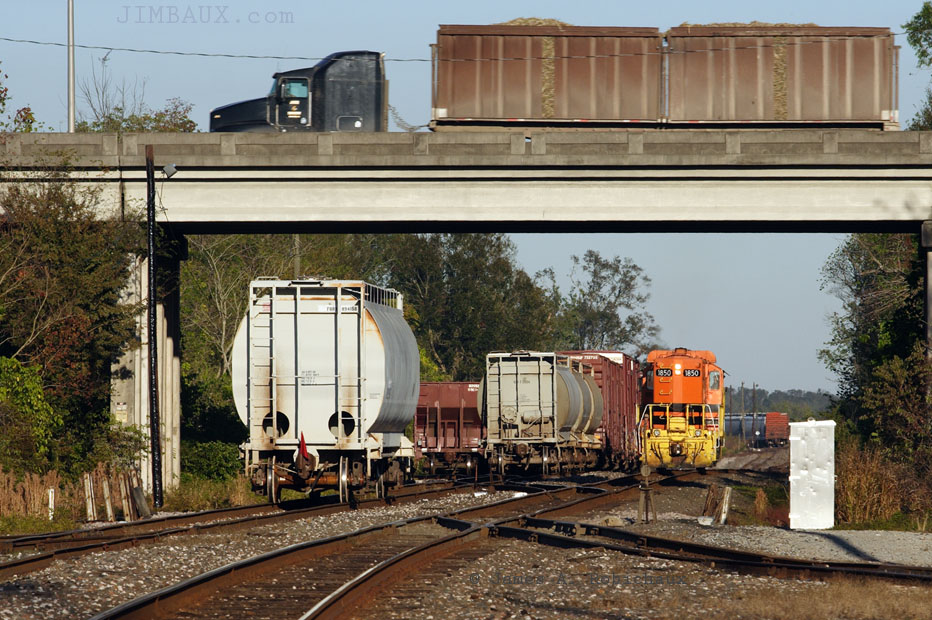
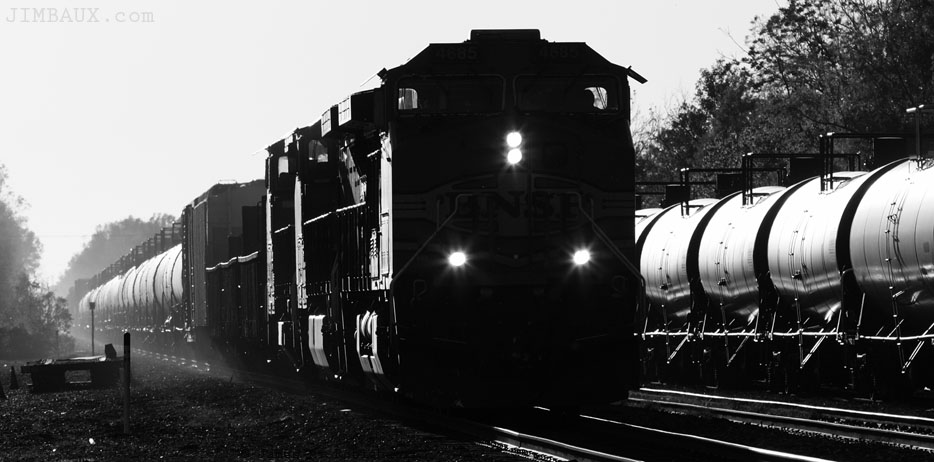

{ 1 comment… read it below or add one }
Nice photos as usual. Lotsa changes in the sights in the past 50 years. Reminds me of the “old timers’ of my youth (1955) that would respond to my questions about their past and the railroad as they knew it in their early careers before WW I. The rest of the story is that no “big” changes occured until the 1950’s with the arrival of the Diesel Locomotives.
{ 2 trackbacks }